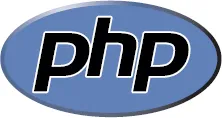
eBook - ePub
PHP in easy steps, 4th edition
Updated for PHP 8
Mike McGrath
This is a test
Share book
- English
- ePUB (mobile friendly)
- Available on iOS & Android
eBook - ePub
PHP in easy steps, 4th edition
Updated for PHP 8
Mike McGrath
Book details
Book preview
Table of contents
Citations
About This Book
PHP in easy steps, 4th edition demonstrates every aspect of the language you'll need to produce professional web programming results. Its examples provide clear syntax-highlighted code, which is freely downloadable, showing PHP language basics including variables, arrays, logic, looping, functions and classes.
- Install a free web server and the PHP interpreter to create an environment in which you can produce your own data-driven web pages.
- Write PHP server-side scripts; master PHP operators and control structures; process HTML form data; get cookies and session data; access Web Services APIs over HTTP... and much more!
PHP in easy steps, 4th edition is ideal for PHP newbies who want to quickly learn the fundamentals of server-side programming with PHP and create interactive web pages. Also, useful for PHP pros who want to grasp the new PHP 8 features and achieve optimum performance!
Updated for PHP 8.
Frequently asked questions
How do I cancel my subscription?
Can/how do I download books?
At the moment all of our mobile-responsive ePub books are available to download via the app. Most of our PDFs are also available to download and we're working on making the final remaining ones downloadable now. Learn more here.
What is the difference between the pricing plans?
Both plans give you full access to the library and all of Perlego’s features. The only differences are the price and subscription period: With the annual plan you’ll save around 30% compared to 12 months on the monthly plan.
What is Perlego?
We are an online textbook subscription service, where you can get access to an entire online library for less than the price of a single book per month. With over 1 million books across 1000+ topics, we’ve got you covered! Learn more here.
Do you support text-to-speech?
Look out for the read-aloud symbol on your next book to see if you can listen to it. The read-aloud tool reads text aloud for you, highlighting the text as it is being read. You can pause it, speed it up and slow it down. Learn more here.
Is PHP in easy steps, 4th edition an online PDF/ePUB?
Yes, you can access PHP in easy steps, 4th edition by Mike McGrath in PDF and/or ePUB format, as well as other popular books in Computer Science & Programming in PHP. We have over one million books available in our catalogue for you to explore.
Information
1
Getting started
Welcome to the exciting world of the interactive web with PHP. This chapter demonstrates how to create a dynamic development environment with a web server and the PHP engine.
Introducing PHP
Installing the Abyss server
Installing the PHP engine
Integrating Abyss and PHP
Embedding PHP script code
Scripting by the rules
Improving performance
Enabling JIT compilation
Summary
Introducing PHP
The most appealing modern websites provide a customized user experience by dynamically responding to some current conditions – user name, time of day, latest blog, shopping cart contents, etc. Many of these dynamic websites are created using PHP.

This is the official logo of the PHP project – the official online home of PHP can be found at php.net
What is PHP?
PHP is a widely-used general purpose scripting language that is especially suited for web development and can be embedded into HTML. It was created by programmer Rasmus Lerdorf, as a set of scripts to maintain his website that he released as “Personal Home Page Tools (PHP Tools) version 1.0” on June 8, 1995.
The tools were extended in the version 2 release of 1997, and the name changed to become a recursive acronym “PHP: Hypertext Preprocessor” in version 3 the following year. Performance, reliability and extensibility were improved in 2000 with the release of PHP4, which was powered by the Zend engine virtual machine.
Subsequently, PHP5 was released in 2004 powered by the new Zend II engine and produced as free software by the PHP group. A planned experimental version PHP6, which intended to introduce native Unicode support throughout PHP, was abandoned but PHP7 was released in 2015. PHP8 was released in 2020 and offers “Just In Time” (JIT) compilation for improved performance. Today, PHP is installed on over 20 million websites and 1 million web servers.
Why is PHP popular?
•PHP is extremely simple for a newcomer, but offers many advanced features for a professional programmer.
•PHP code is enclosed in special start and end processing tags that allow you to jump into and out of “PHP mode”, to implement instructions within an HTML document.
•PHP code is executed on the server (“server-side”), unlike JavaScript code that is executed in the browser (“client-side”). The client receives the results of running the script without knowing what the underlying code was. Recently, server-side has become known as “The Cloud”.

This is the “elePHPant” – the mascot of the PHP project, designed by Vincent Pontier.
Understanding The Cloud
Whenever a user asks to view a web page in their browser, it requests the...